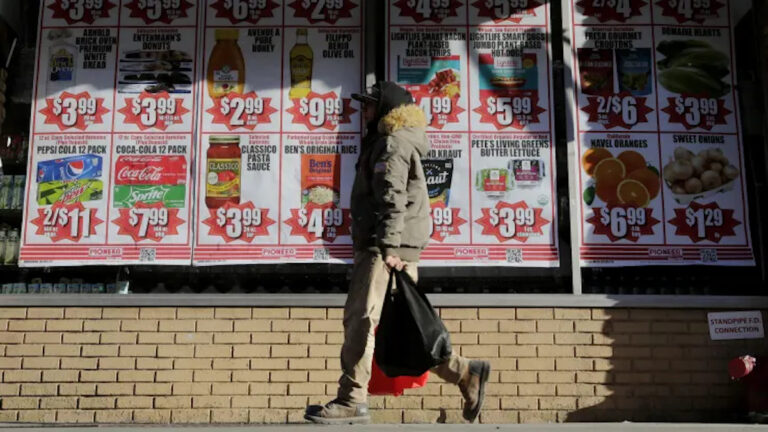
Just when Federal Reserve policymakers have grown confident that inflation is slowing, news contradicting that picture might emerge.
All eyes on the market The Labor Department’s consumer price index, a widely followed inflation indicator that monitors the costs of dozens of products and services throughout the economy, will be released on Tuesday.
As the year 2022 came to a conclusion, the CPI was on the decline. However, it appears that inflation will be high in 2023, maybe exceeding Wall Street projections.
“We’ve gotten surprises on the soft side for the last three months.” “It wouldn’t be at all surprising if we got a surprise on the hot side in January,” said Mark Zandi, chief economist at Moody’s Analytics.
According to Dow Jones, economists anticipate a 0.4% increase in the CPI in January, translating into 6.2% annual growth. The core CPI, which excludes food and energy, is expected to climb by 0.3% and 5.5%, respectively.
However, there are some indications that the figure might be significantly higher.
The Cleveland Fed’s “Nowcast” tracker of CPI components predicts monthly inflation of 0.65% and annual inflation of 6.5%. The basic forecast is for 0.46% to 5.6%.
The Fed model is based on fewer factors than the CPI report, according to its creators, and uses more real-time data than the backward-looking statistics commonly found in official reports. The Cleveland Fed claims that their technique beats other prominent forecasts over time.
impact on interest rates
If the result is higher than predicted, there might be significant investment ramifications.
The CPI and a slew of other data indicators are being scrutinised by Fed policymakers to see if a sequence of eight interest rate hikes is having the desired impact of reducing inflation, which reached a 41-year peak last summer. If monetary tightening fails to provide the desired results, the Fed may be forced to adopt a more aggressive stance.
However, Zandi cautioned against making too much of individual stories.
“We shouldn’t get fixated too much on any month-to-month movements,” he said. “Generally, looking through month-to-month volatility, we should see continued declines in year-over-year growth.”
Indeed, the CPI peaked at approximately 9% on an annual basis in June 2022 but has since fallen to 6.4% in December.
However, food prices have remained persistent, remaining more than 10% higher year over year in December. According to AAA, gasoline prices have also reversed direction, with prices at the pump rising by nearly 30 cents a gallon in January.
According to revisions issued Friday, the previously reported 0.1% fall in the headline CPI for December has been revised up to a 0.1% rise.
“When you’ve had a string of lower-than-expected numbers, can that continue?” “I don’t know,” said Peter Boockvar, chief investment officer at Bleakley Advisory Group.
Boockvar believes the January report will have little impact on the Fed in either direction.
“Let’s just say the headline number is 6%. “Is that really going to move the needle for the Fed?” he said. “The Fed seems intent on raising another 50 basis points, and there’s clearly going to be a lot more evidence needed for them to change that.” “One number is certainly not going to do that.”
According to market expectations, the Fed is expected to raise its benchmark interest rate two more times from its current target range of 4.5%–4.75%.. This equates to an additional half-point, or 50 basis points. Market pricing also suggests that the Fed will pause at a “terminal rate” of 5.18%.
Changes in the CPI report
There are additional difficulties that might muddy the data since the Bureau of Labor Statistics is altering the method the report is compiled.
One noteworthy change is that it is now comparing pricing over a one-year period rather than the two-year period it previously used.
As a result, the weighting for food and energy costs, for example, will have a slightly less impact on the headline CPI statistic, while housing will have a slightly higher weighting.
Furthermore, shelter will have a greater impact, increasing from roughly 33% to 34.4%. The BLS will also give detached rental units a higher price weighting than apartments.
The weightings are changed to suit consumer purchasing trends, allowing the CPI to present a more realistic cost-of-living picture.